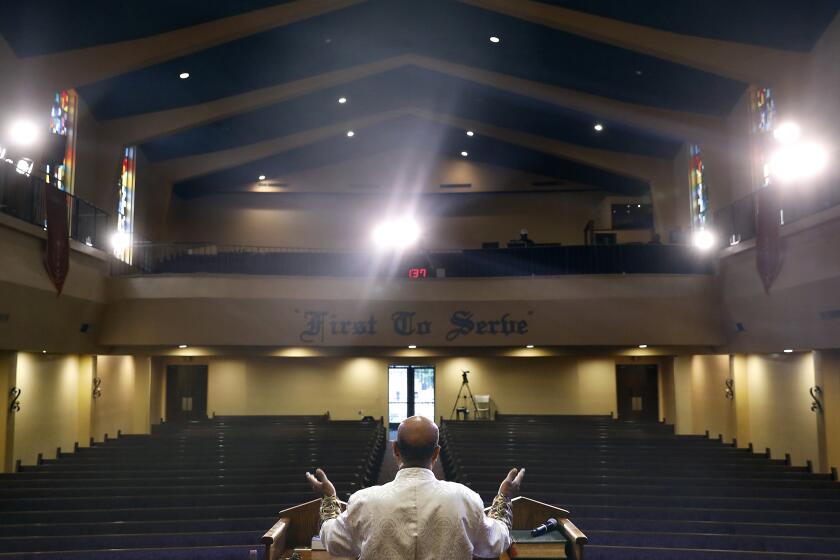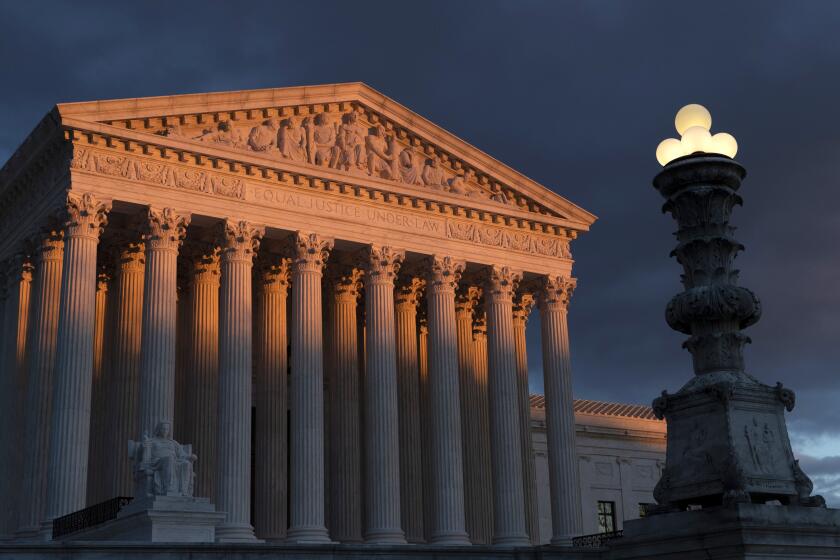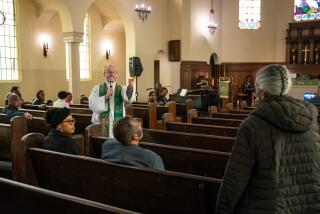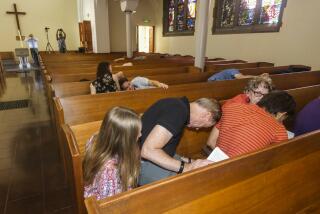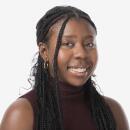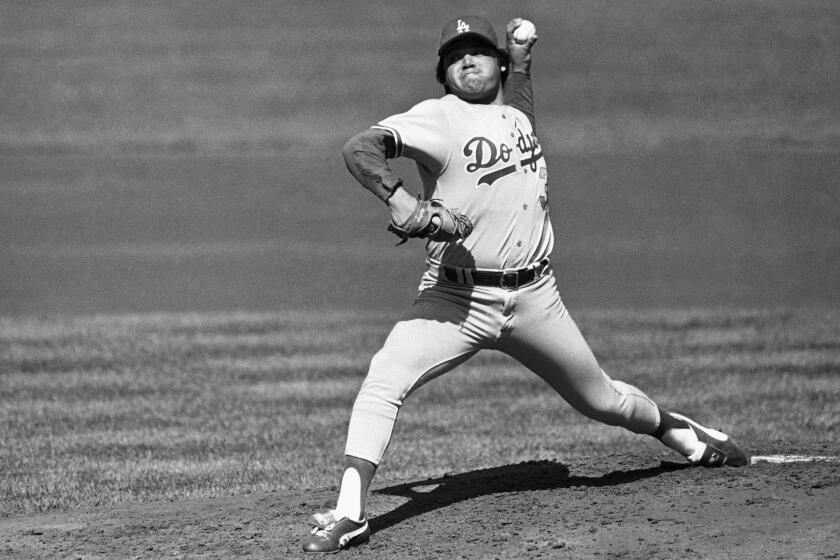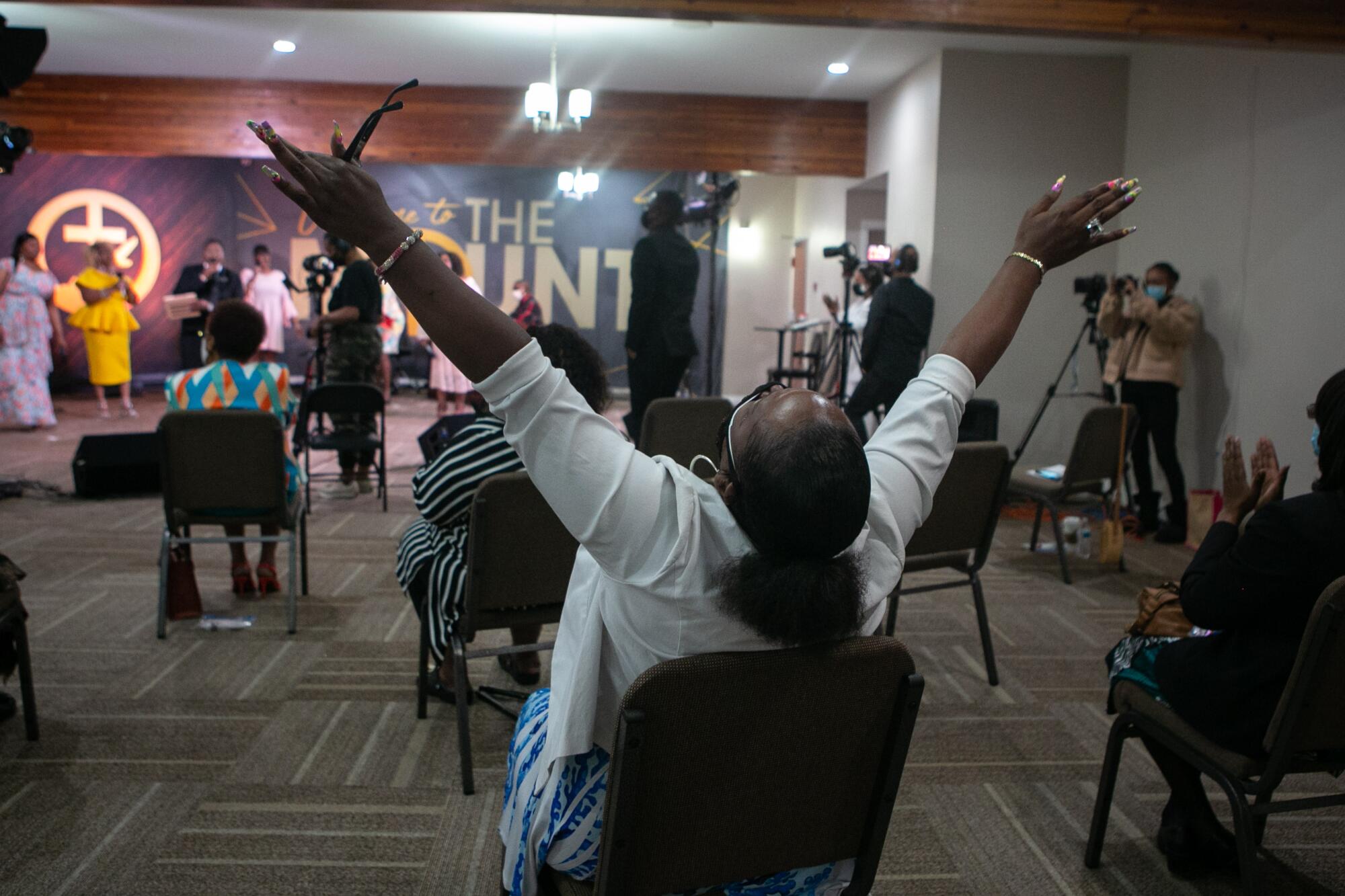
On Easter Sunday, Denice Daye listened to her pastor’s voice booming from a computer.
She was with her grandson in her View Park living room. Her fellow worshipers were isolated in their homes as well. Instead of being onstage with the church choir, she listened to herself sing in a prerecorded performance.
For the record:
9:26 a.m. April 5, 2021An earlier version of this story stated that worshiper Denice Daye was alone in her living room. She was with her grandson. The earlier version also stated that Marley Ralph is the co-founder of WalkGoodL.A; she is the nonprofit’s director of health and wellness; that Etienne Maurice is the co-founder; he is the founder; and that Ivy Coco Maurice is co-founder; she is the vice president.
But none of that prevented her from dressing up in a soft peach blouse and black pants. She adorned the room with tulips and candles.
Daye, a 69-year-old hairdresser, has been a member of Grace United Methodist Church in Hyde Park, a predominantly Black church, for 25 years. In addition to singing in the choir, she is on the worship committee and plans events.
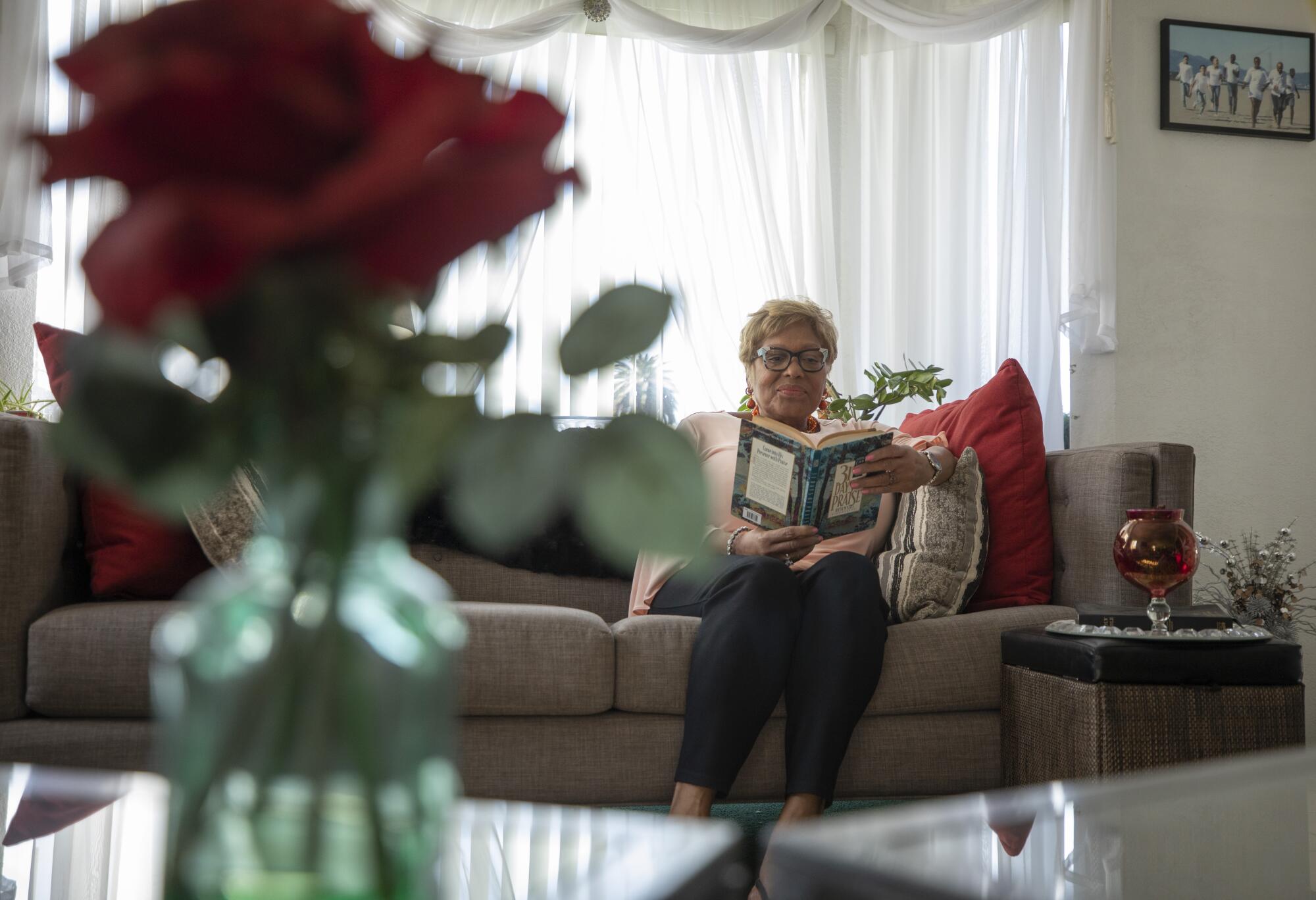
This was her second Zoom Easter, after a year of Sunday Zooms. Sometimes, she gets “sick of those little squares.” But, she said, God does not need the four walls of a church to make his presence known.
“That’s one thing that I have learned, just to appreciate the space that is and know that God is everywhere,” Daye said. “And we can worship him in whatever situation we find ourselves.”
From living rooms to parking lots to chapels with masked, socially distanced worshipers, Southern California’s Black churches celebrated their second pandemic Easter on Sunday after a year of hardship and loss.
With indoor services permitted at 25% capacity, pastors wrestled with whether to ditch Zoom and invite their flock to worship in person.
Most concluded the time was not right. Coronavirus cases were down and vaccinations were up, but they did not feel safe courting a disease that has killed Black people in disproportionate numbers.
Nor would pews that were only a quarter full be quite the same on a holiday that usually draws crowds — including those who do not normally go to church — decked out in elaborate hats and colorful pastels, to be uplifted by Christ’s resurrection and also to see and be seen, in a tradition centuries old.
Black churches have long served as places of refuge in times of crisis. But with the coronavirus, pastors in South L.A. have had to help in different ways.
The absence of full-blown in-person church services for a second year was an added blow for a Black community that has lost fellow worshipers, family members and revered religious leaders to the coronavirus. Businesses and livelihoods have been lost too.
A few churches opted for small in-person services, adhering to safety protocols, because face-to-face contact was so vital, especially for older members.
Like Daye, other worshipers across the region made the best of it, finding ways to inject holiday joy into their small gatherings or solo Zoom viewings. Some dressed to the nines, singing and clapping up a storm. Others found spirituality through yoga.
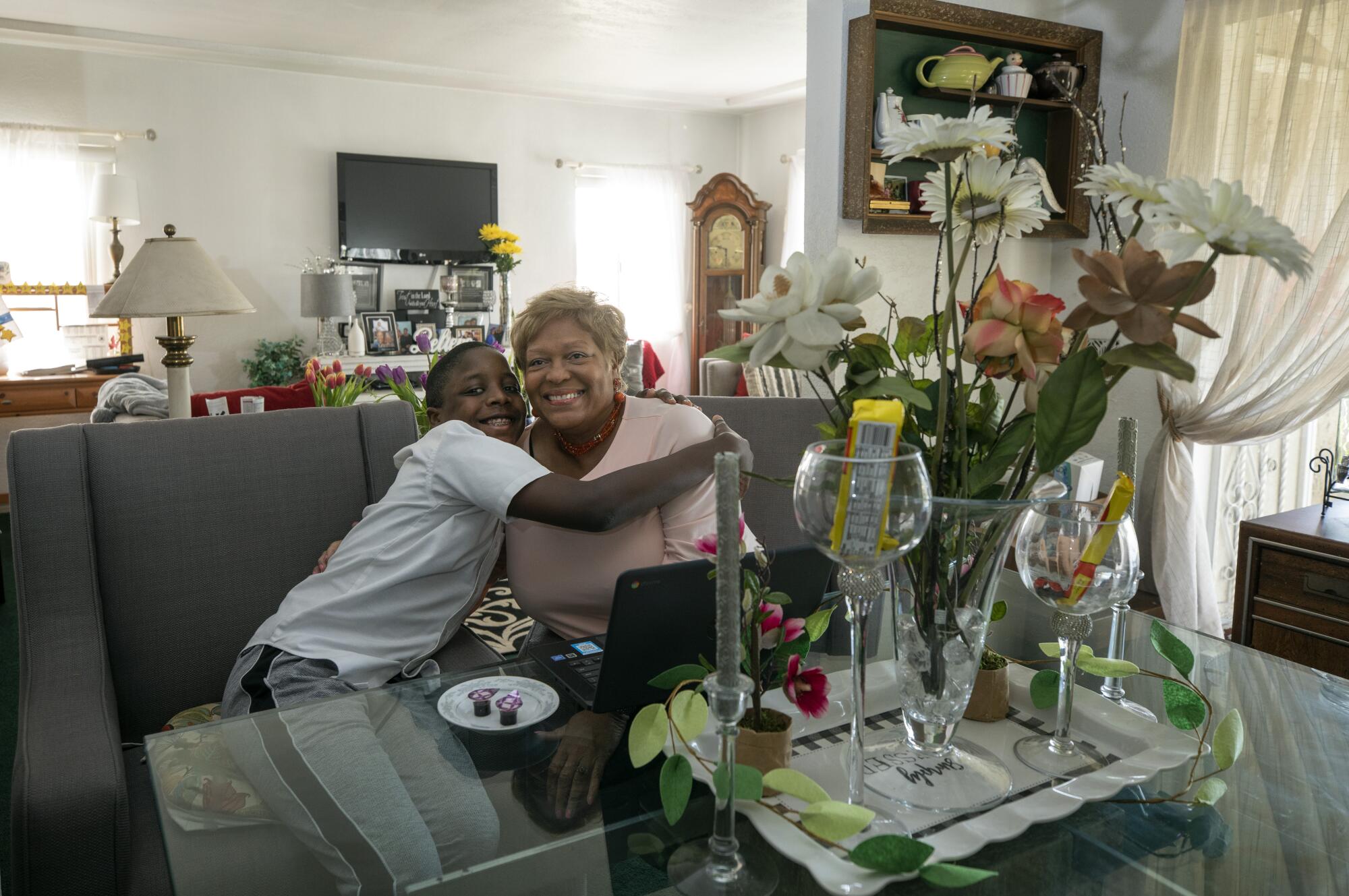
The theme of resurrection was especially resonant this year, with a return to normal life possibly on the horizon as the country slowly beats back the virus.
On Sunday morning, Pastor Fred Price Jr. looked out over the empty pews of his South L.A. megachurch, then retreated to a smaller room to deliver his Easter sermon via livestream on the church website and other platforms.
The FaithDome at Crenshaw Christian Center seats more than 10,000 people, and at least that many were listening to Price from their homes.
Choir members sang from the bookshop, separated by clear plastic dividers to avoid the risk of spreading the virus.
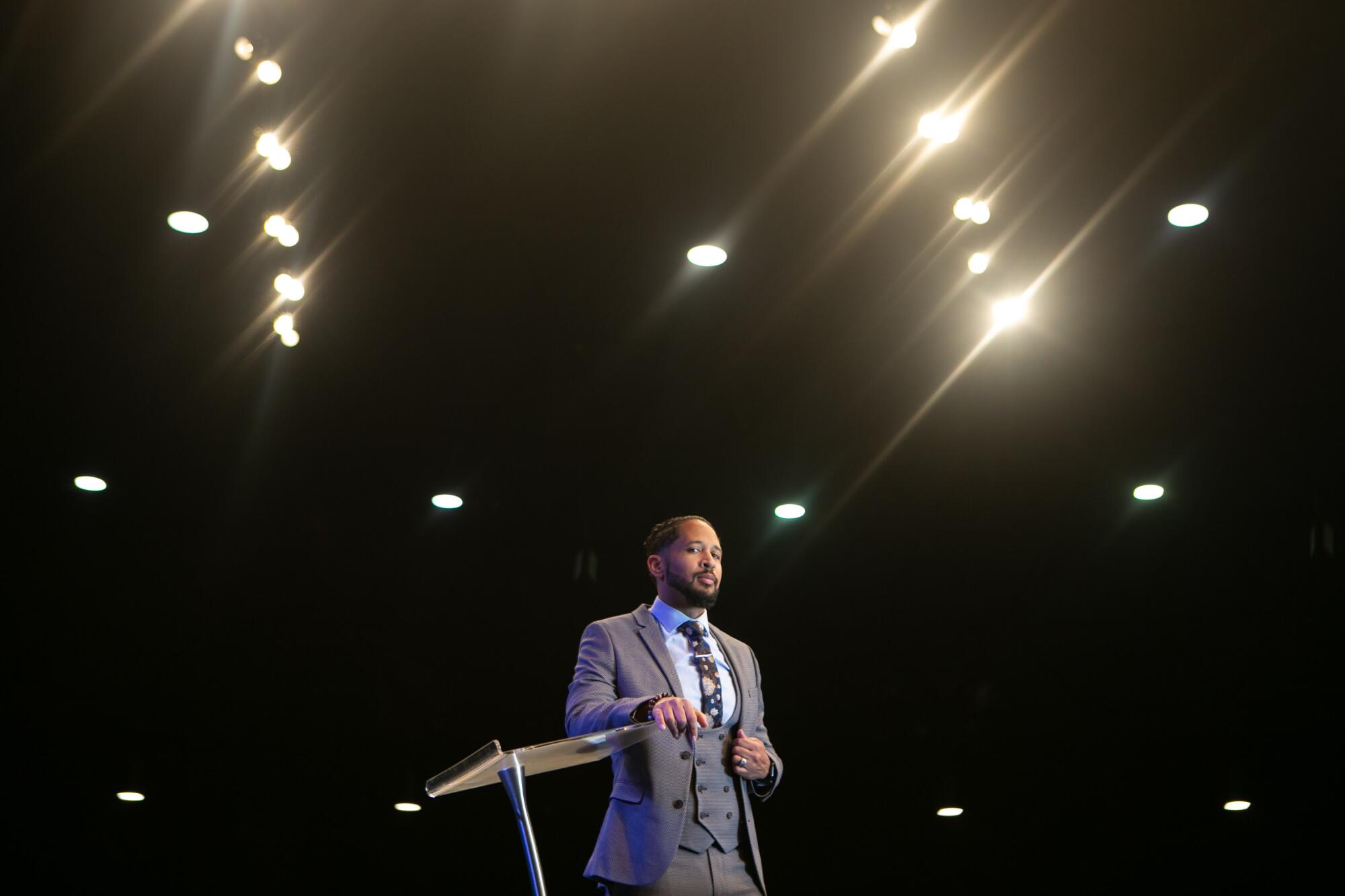
There was something else profoundly different about this year. Price’s father, church founder Apostle Frederick K.C. Price, died of COVID-19 in February. His mother fell ill from the virus but recovered.
The losses of the last year, capped by the loss of one of his parents, have sharpened his empathy, he said.
“So, to then be put in the same position as people that I ministered to and counsel in those moments was very sobering,” he said. “And it was a classic case of, ‘Physician, heal thyself.’”
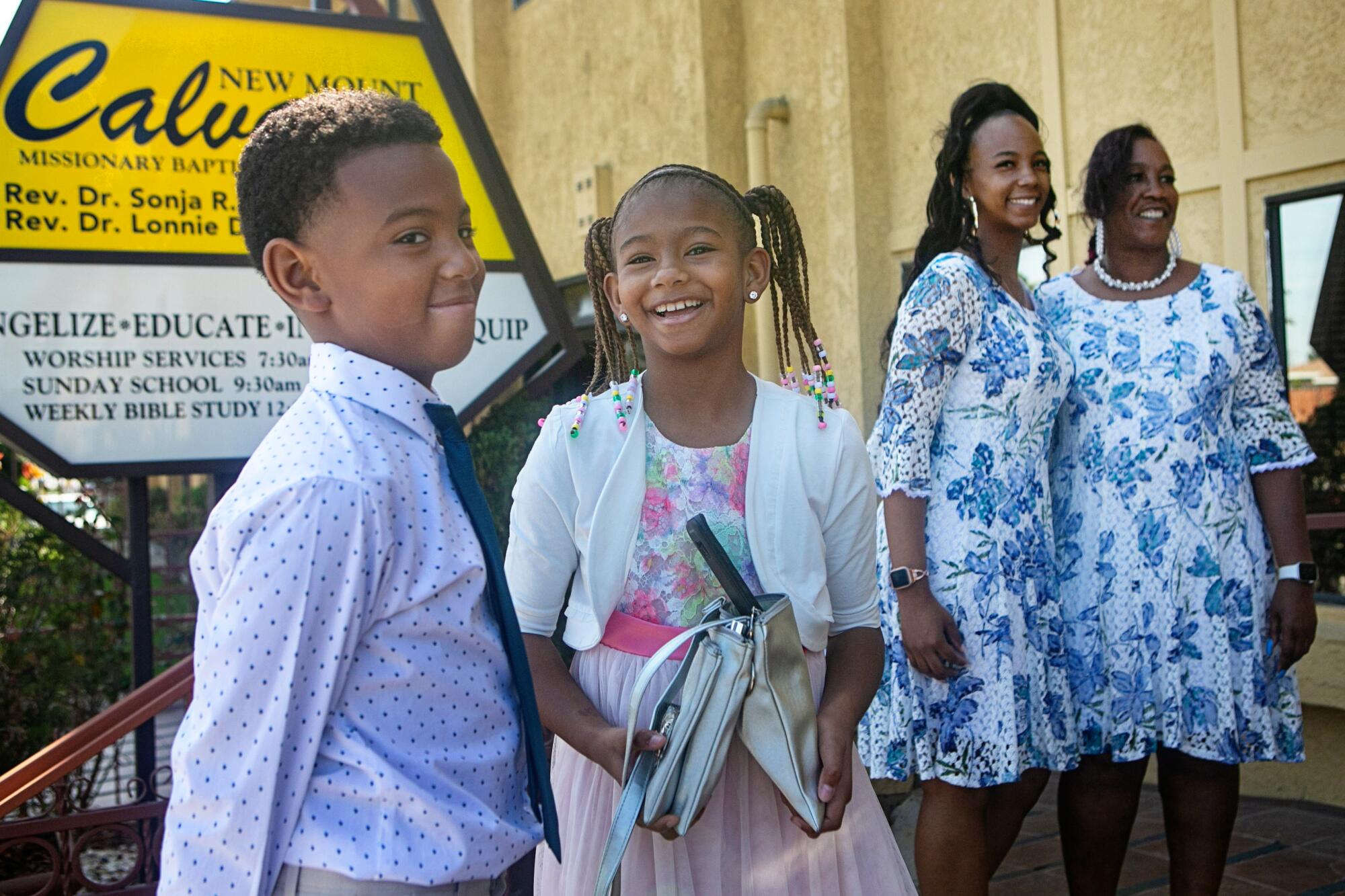
Even if the virus numbers continue to improve, Price does not anticipate holding in-person services until the summer at the earliest.
Price received the COVID-19 vaccine last week. Like many Black Americans, he was suspicious of the shot because of a history of Black people being used in medical experiments.
But as friends and family, including close friends who are doctors, got vaccinated, he overcame his hesitancy. Crenshaw Christian Center has been a coronavirus testing site and now is a vaccination site.
Price is now sharing his experience with his congregation and “encouraging them not to be afraid.”
Julie Landry, 74, was listening to Price from her Las Vegas home. She stuck with Crenshaw Christian after her move five years ago, so livestreamed services are nothing new for her.
This Easter, watching from her couch, the homemaker opted to dress casually instead of donning one of the “outlandish” church hats for which she is known. During Communion, she tore off pieces of bread and drank red wine from a small shot glass.
At L.A. High Memorial Park in Mid-Wilshire, more than 200 people, mostly Black or brown, gathered outdoors for an unconventional Easter celebration centered on yoga.
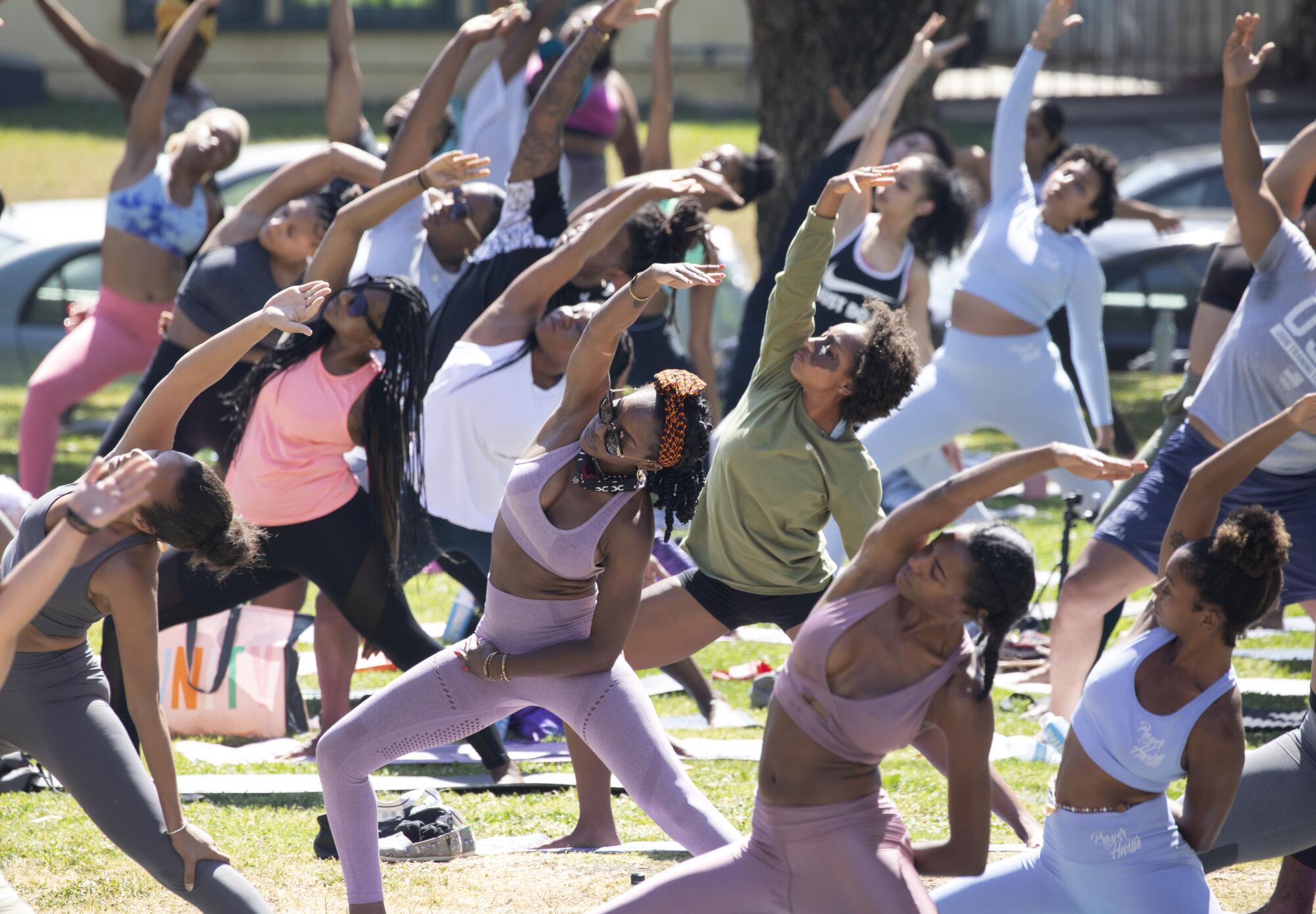
The free yoga class, called BreatheGood, has been offered in the park since June, courtesy of WalkGoodLA, a nonprofit social justice organization. It was founded by Etienne Maurice of Mid-City following the fatal shooting of an unarmed Black jogger, Ahmaud Arbery, by a white man in Georgia.
“We’re going to bring you to church today!” said Marley Ralph, who is the nonprofit’s director of health and wellness.
Her cousins, Etienne and Ivy Coco Maurice, the latter of whom is the group’s vice president, help her lead the weekly classes.
Ralph’s aunt, actress Sheryl Lee Ralph, opened the gathering with a message about getting along, the meaning of Resurrection Sunday and being grateful.
A DJ played modern gospel, reggae and soul music, sequenced to the yoga poses. The session also included a guided meditation and sound bath.
BreatheGood was an alternative for those who would typically attend Easter services at their family churches. Without in-person services, they opted for the spirituality of yoga in the park.
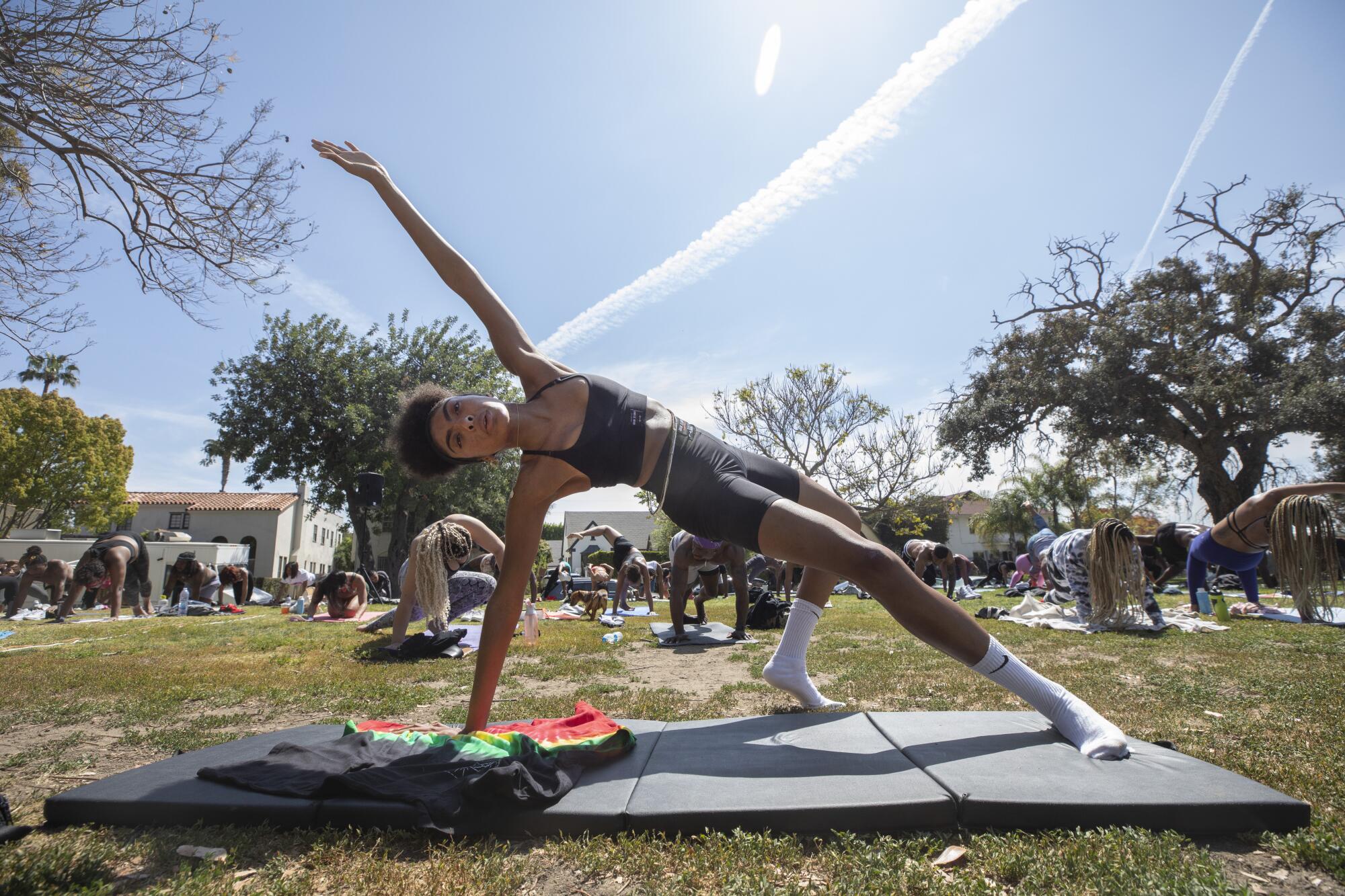
“I do miss being with my church family, but obviously that wasn’t possible because of COVID-19,” Etienne Maurice said.
Tatiana Roache, 27, was among those who would have been in church on a normal Easter Sunday.
“I loved it because it felt like a New Age way to do church,” the North Hollywood resident said. “Because church is always about communion and a group of people coming together and worshiping…. It definitely still felt like [church].”
The yoga gathering was like church in another way, too.
“This is still church, so please donate,” Ralph said after the session ended.
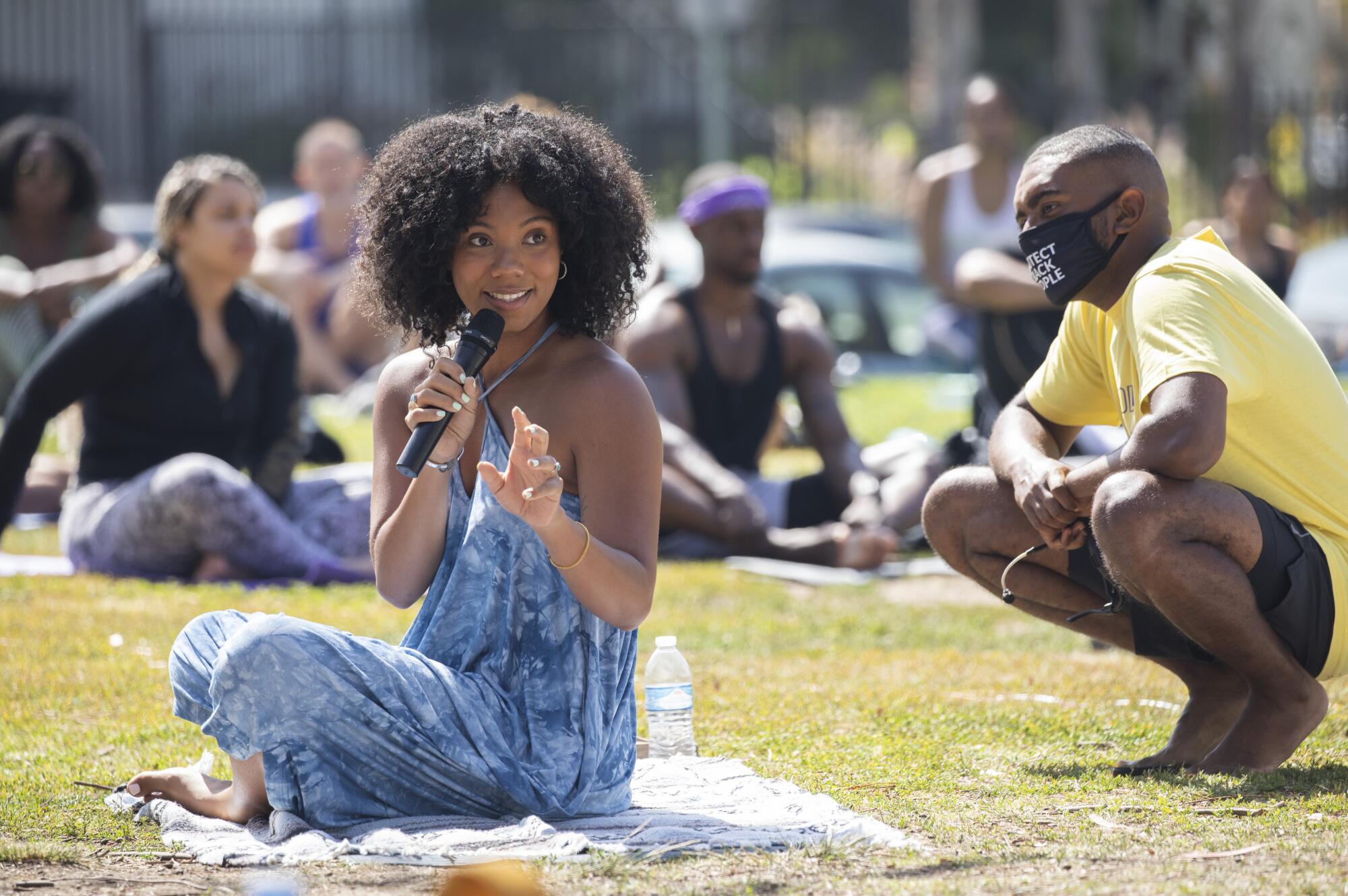
For many large churches, holding indoor services at 25% capacity was unworkable, safety concerns aside.
With infrequent worshipers joining regular congregants, Pastor Michael J.T. Fisher would have had to conduct more services than the four packed gatherings he leads on a typical Easter.
“I would literally have to do a marathon to accommodate the amount of people who would come, so it just wasn’t feasible physically or logically for us to open up,” said Fisher, who leads Greater Zion Church Family in Compton.
In a rebuke to Newsom, Supreme Court says California’s ban on indoor worship violates the Constitution’s protection of the free exercise of religion.
Some churches found other solutions.
First African Methodist Episcopal Church, the oldest Black church in L.A., held a parking lot service.
Pastor William Epps at Second Baptist Church broadcast his sermon on the radio before hosting an Easter play on Zoom with church members.
New Mount Calvary Missionary Baptist in Willowbrook was one of the few Black churches that welcomed a limited number of in-person worshipers.
The Easter service was capped at a snappy 90 minutes for 58 church members who sat in chairs spread out across a multipurpose room instead of in pews.
A few others gathered in the church’s youth center, while others watched a livestream from home.
Everyone wore masks, and most opted for muted clothing — no fancy hats in sight.
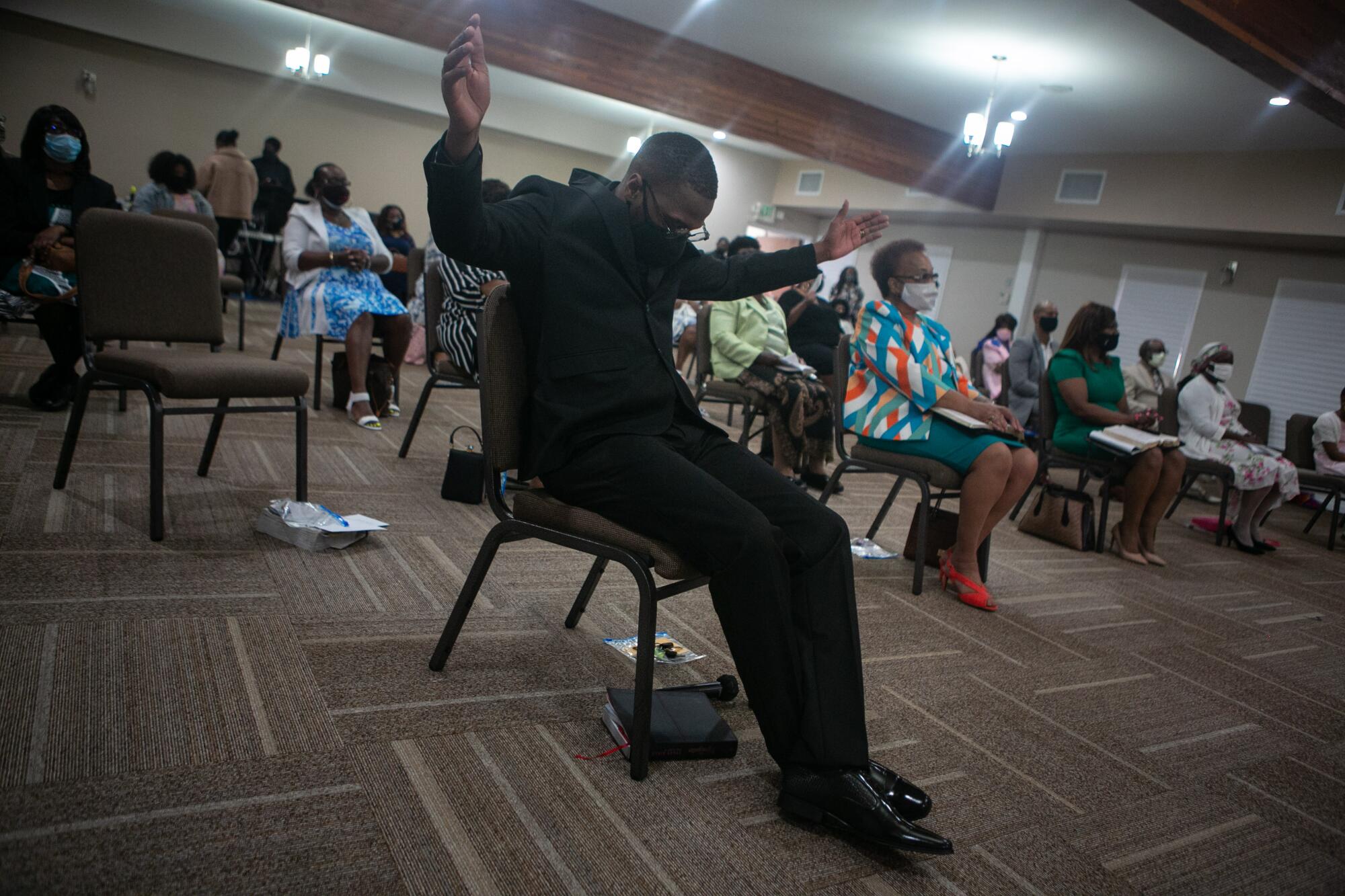
Ushers greeted congregants and passed out programs as usual. They took temperatures and checked names against a list of those who had reserved a seat.
Pastor Sonja Dawson said she carefully weighed the risks and benefits of a small in-person service.
The previous Sunday, when the church’s leadership and senior members attended in person, some older congregants said they feared they would die before getting a chance to return to the church.
“Because he got up, we can get up,” Dawson shouted at the climax of her Easter sermon. “Even in our communities — making sure everyone is protected from this deadly virus — because he got up, we can get up.”
Elroy Webb, chairman of the deacon board for 40 years, said there is no substitute for gathering with his peers.
“I was just thrilled to see my church family,” Webb said. “Online and TV are good, but ain’t nothing like this atmosphere, the warmness.”
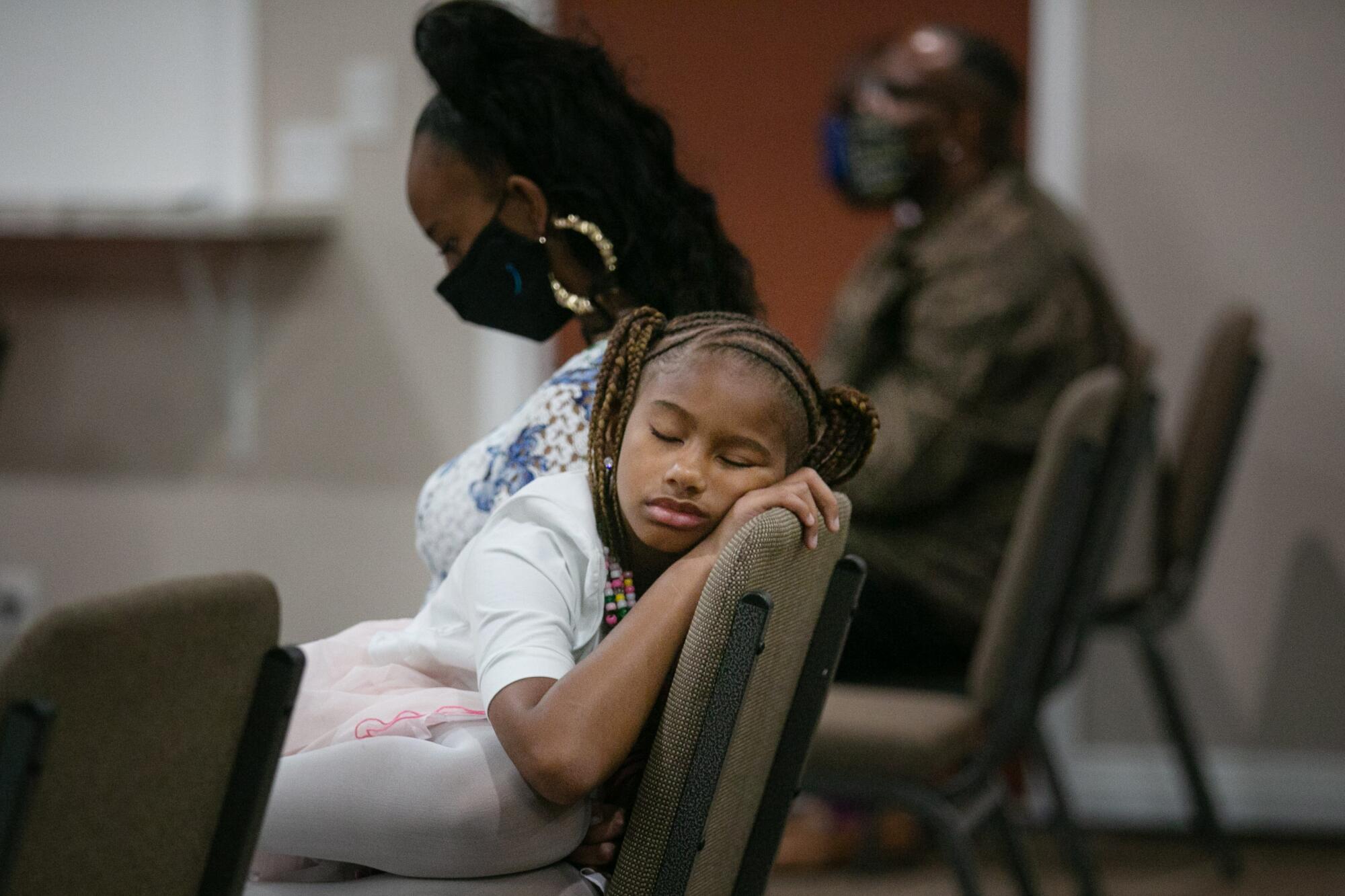
More to Read
Sign up for Essential California
The most important California stories and recommendations in your inbox every morning.
You may occasionally receive promotional content from the Los Angeles Times.
